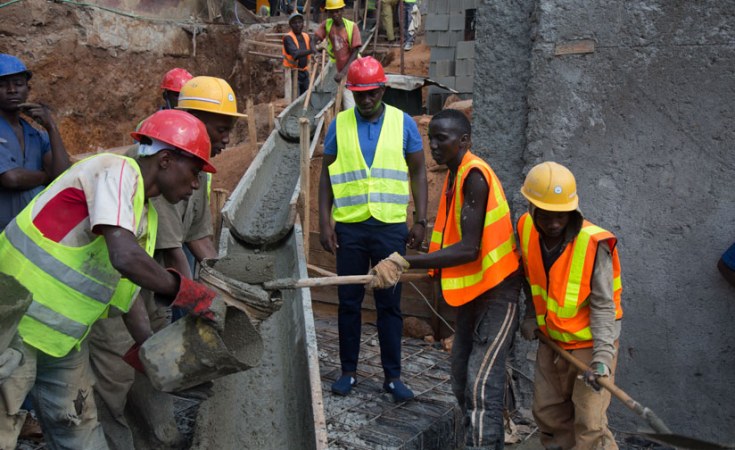While the country is celebrating having achieved the milestone of having 30.4 per cent of its surface covered by forests, environmentalists have warned that construction projects are threatening immature forests which may erode the gains registered.
According to Rwanda Environment Management Authority (REMA), an investigation carried out last week from August 22 to August 28 reported 21 construction projects using illegally-harvested immature trees in Rwamagana and Kamonyi districts.
A similar trend was observed in Muhanga District, where they found construction projects are being carried out in state forest in the area while 15 construction activities in Kigali city were found using trees from immature forests.
The report shows six construction activities, one project, were using immature trees in Bugesera and Kamonyi districts respectively.
"There is trade and transport of immature trees for construction projects at a high rate in Kigali city," the inspection showed.
Earlier in the month, the watchdog had uncovered that 15 construction projects were using illegally harvested 'immature trees' instead of using metals or planks in the districts of Kamonyi, Muhanga, Gakenke, Ngororero, Gasabo, Kicukiro and Nyarugenge.
This, REMA says, is contrary to the 2013 law and Rwanda Investigation Bureau (RIB) has also launched an operation to arrest environmental degraders.
A person who uses immature trees in construction activities faces between Rwf300,000 and Rwf1 million fine depending on the size of the house they are building.
A driver of a truck carrying immature harvested trees faces Rwf500,000 fine while a person who illegally sells immaturely harvested trees is punished with a Rwf1 million fine.
Alexandre Nzirorera, an engineer in Kigali city, explained that some construction project implementers are using immature trees because they do not know that it is illegal and harms the environment while others fear the cost of other materials that can replace such immature trees.
"There are planks in Gisozi carpentry hub but they are expensive compared to immature trees. The cost of metal is also high. There is need for awareness because using immature trees could even lead to facing shortage of mature trees from which planks can be produced," he told The New Times.
Forestry authority speaks out
Spridio Nshimiyimana, the acting Director General of Rwanda Forestry Authority told The New Times that if the threat to immature forests persists, the forest cover gains could be eroded.
Forests of Rwanda occupy now about 724,695 hectares of the total country land (30.4 per cent) of which 387,425 hectares (53.5 per cent) are plantations, 130,850 hectares (18.1 per cent) are natural mountain rainforests, 161,843 hectares are wooded savannah (22.3 per cent) and 43, 963 hectares are Shrubs (6.1 per cent).
"What we need is to put more effort into education about the effects of felling immature trees. Cutting immature trees means revenues from forests could also decrease," he noted.
Revenues from the forestry sector have increased from Rwf164 billion in 2007 to Rwf609 billion in 2021 and are projected to increase more if forests are well managed, he said.
The country plans to plant 30 million tree seedlings in the 2022/23 fiscal year.
While Rwanda is set to debut on the Global Carbon Market, experts say more efforts are needed to plant and protect more trees which can help in selling carbon credits.
Klaas Jan Jonkmana, Chief Executive of Sawmill East Africa Ltd, a Kigali-based company involved in producing timber and wooden products, said that Rwanda can create new forests or use the existing ones less intensively with a change of species of trees to get carbon rights (credits).
Rwanda has an ambitious target to reduce greenhouse gas emissions by 38 per cent by 2030.
In 2011, Rwanda became one of the early adopters of the Bonn Challenge - a global effort to bring 150 million hectares of the world's deforested and degraded land into restoration by 2020, and 350 million hectares by 2030.
Rwanda committed to restore two million hectares of degraded and deforested landscapes by 2030.
Currently 900,000 hectares or 45 per cent of the two million hectares of degraded forests and landscapes are being restored.
At least $652 million has been invested in forest landscape restoration programmes.


